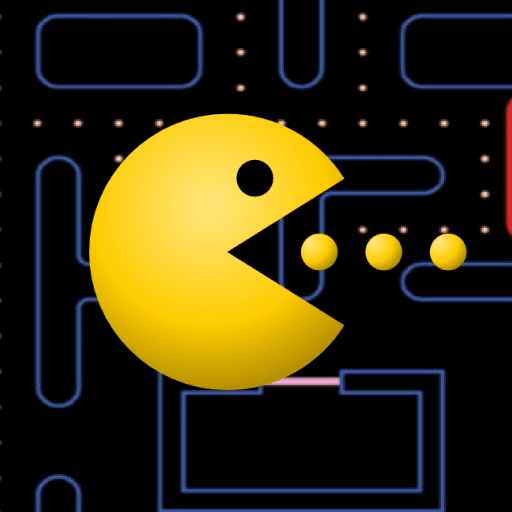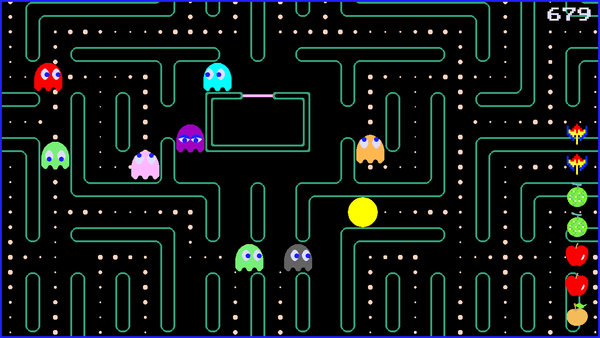

Pac-Man, the iconic yellow chomper, has been a staple of arcade gaming for over four decades. This timeless maze chase game continues to captivate players of all ages, offering a perfect blend of simplicity and challenge. Now, thanks to pacmanunblocked.com, you can enjoy this classic arcade experience on your mobile device or PC without any restrictions. Let’s dive into the world of Pac-Man and discover why this game remains a beloved favorite in the ever-evolving landscape of video games.
Pac-Man burst onto the arcade scene in 1980, forever changing the face of video gaming. Created by Toru Iwatani and developed by Namco, this maze-chase game quickly became a global phenomenon. The concept was brilliantly simple: guide a yellow, circular character through a maze, gobbling up dots while avoiding four colorful ghosts. Yet, beneath this straightforward premise lay a game of strategy, timing, and reflexes that would challenge players for generations to come.
The game’s success can be attributed to several factors. First and foremost, Pac-Man was designed to appeal to a broader audience than the space shooters that dominated arcades at the time. Iwatani wanted to create a game that would attract female players and couples, moving away from the violence-centric games of the era. The result was a character-driven experience with a unique charm and personality.
Pac-Man’s design was reportedly inspired by a pizza with a slice missing, which gave Iwatani the idea for the game’s protagonist. The ghosts – Blinky, Pinky, Inky, and Clyde – each had distinct personalities and movement patterns, adding depth to the gameplay. This attention to character detail was revolutionary for its time and contributed significantly to the game’s widespread appeal.
The gameplay itself was addictive and challenging. Players had to navigate increasingly difficult mazes, avoiding ghosts while trying to clear all the dots. Power pellets added an extra layer of strategy, temporarily allowing Pac-Man to turn the tables on his spectral pursuers. The addition of bonus fruits for extra points gave players something to strive for beyond simply completing levels.
As technology has advanced, Pac-Man has evolved with the times. The game has been ported to countless platforms, from early home consoles to modern smartphones. However, the core gameplay remains largely unchanged, a testament to its timeless design. Today, thanks to websites like pacmanunblocked.com, players can enjoy Pac-Man directly in their web browsers, no download or installation required.
This accessibility has breathed new life into the classic game. Whether you’re on a lunch break at work, waiting for a bus, or simply looking for a quick gaming fix at home, Pac-Man is just a few clicks away. The game’s simple controls translate well to both touchscreen devices and traditional keyboards, ensuring a smooth gaming experience across all platforms.
The rise of mobile gaming has been particularly beneficial for classic arcade titles like Pac-Man. The game’s short, intense rounds are perfect for on-the-go gaming sessions. Players can easily fit in a level or two during brief moments of downtime throughout their day. This convenience, coupled with the nostalgia factor, has helped Pac-Man maintain its relevance in the modern gaming landscape.
Moreover, the mobile platform has allowed for innovative takes on the classic formula. While purists can still enjoy the original game, developers have also created new versions that incorporate modern gaming elements. These iterations often feature updated graphics, new power-ups, and even multiplayer modes, all while retaining the core essence of Pac-Man.
Pac-Man’s influence extends far beyond the realm of video games. The character has become a cultural icon, recognizable even to those who have never played the game. Pac-Man’s simple yet distinctive design has graced everything from t-shirts and coffee mugs to high-end fashion collections.
The game’s impact on popular culture was evident almost immediately upon its release. In 1981, the song “Pac-Man Fever” by Buckner & Garcia reached the top 10 on the Billboard Hot 100 chart. The Pac-Man cartoon series aired in the early 1980s, further cementing the character’s place in popular consciousness.
In the world of art, Pac-Man has been the subject of numerous works, from street art to gallery exhibitions. The game’s minimalist aesthetic and themes of consumption and pursuit have provided rich material for artistic interpretation.
While Pac-Man may seem simple compared to modern esports titles, it has a thriving competitive scene. High-score chasing has been a part of Pac-Man culture since the game’s inception, with players striving to achieve the elusive perfect score of 3,333,360 points – a feat that requires clearing all 255 levels without losing a single life.
The first perfect Pac-Man game was achieved by Billy Mitchell in 1999, nearly two decades after the game’s release. This accomplishment sparked renewed interest in competitive Pac-Man play. Today, websites like pacmanunblocked.com often feature leaderboards, allowing players to compete for high scores on a global scale.
Competitive Pac-Man play requires an intimate understanding of the game’s mechanics, including ghost behavior patterns and optimal routes through each maze. Top players can predict ghost movements with uncanny accuracy, weaving through the maze with precision to maximize their point totals.
In an era of hyper-realistic graphics and complex gameplay systems, Pac-Man’s continued popularity might seem surprising. However, the game’s enduring appeal lies in its perfect balance of accessibility and depth.
At its core, Pac-Man is easy to understand. The goals are clear: eat all the dots, avoid the ghosts, and try to score as many points as possible. This simplicity means that anyone can pick up the game and start playing immediately. There are no complicated control schemes to master or intricate storylines to follow.
Yet, beneath this simple exterior lies a game of considerable depth. As players progress through the levels, the ghosts become faster and more aggressive. The window for eating ghosts after consuming a power pellet shrinks, requiring more precise timing. Clearing a maze efficiently while maximizing points becomes a delicate balancing act.
This combination of easy entry and high skill ceiling means that Pac-Man can be enjoyed by casual players and hardcore enthusiasts alike. A newcomer can have fun navigating the first few mazes, while a seasoned player can strive for ever-higher scores and more efficient routes.
Pac-Man’s design taps into some fundamental aspects of human psychology, which contributes to its addictive nature. The constant pursuit by the ghosts creates a sense of tension and excitement, triggering the release of adrenaline and dopamine. The satisfaction of clearing a maze or successfully turning the tables on the ghosts with a power pellet provides a sense of achievement and reward.
The game’s maze structure also appeals to our innate problem-solving instincts. Each level presents a new puzzle to solve, requiring players to find the optimal path through the maze while avoiding danger. This cognitive engagement, combined with the game’s fast-paced action, creates a flow state that can make time seem to fly by.
Moreover, the character designs in Pacman are simple yet effective. The round, friendly appearance of Pac-Man contrasts with the more menacing ghosts, creating a clear narrative of good versus evil that players can easily engage with. The distinct personalities of the ghosts add depth to this narrative, making the game feel more alive and dynamic.
Beyond its role as entertainment, Pac-Man has found applications in education and scientific research. The game’s simple rules and clear objectives make it an excellent tool for teaching basic programming concepts. Many coding tutorials use Pac-Man-like games as projects, helping students learn about game logic, artificial intelligence, and user interface design.
In the field of artificial intelligence research, Pac-Man has been used as a testbed for developing and evaluating AI algorithms. The game’s combination of path-finding, decision-making under uncertainty, and adversarial planning make it an ideal environment for studying various aspects of machine learning and cognitive science.
Researchers have developed AI agents capable of playing Pac-Man at superhuman levels, using techniques such as reinforcement learning and neural networks. These studies not only advance our understanding of artificial intelligence but also provide insights into human cognition and decision-making processes.
As we look to the future, it’s clear that Pac-Man will continue to hold a special place in gaming culture. The game’s timeless design ensures its relevance, while its adaptability allows it to embrace new technologies and platforms.